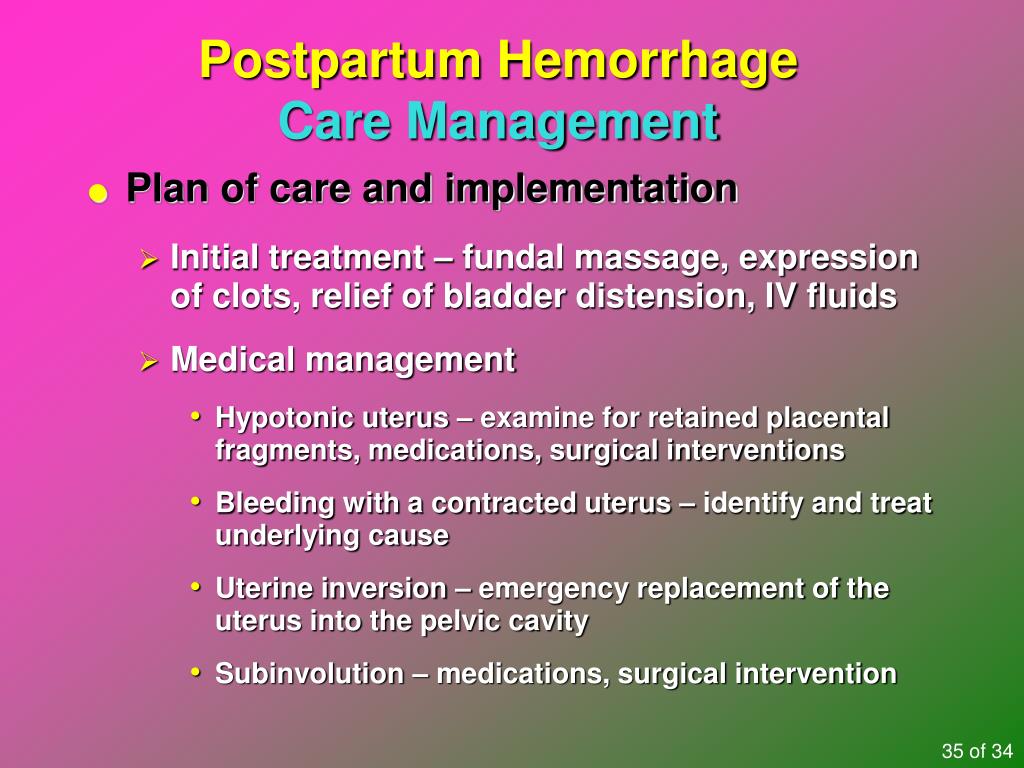
Failure of major organs, such as the lungs and kidneys.Use of general anesthetic during delivery.Age of the mother – having the first baby at age 40 years or above.

Having had a long labor – more than 12 hours.Fetal macrosomia – having a baby that weighs more than 9 lbs or 4 kg.Tear in the perineum (lacerations) or episiotomy.Delayed delivery of placenta or retained placenta – not passing the placenta within the hour after birth of the baby.Thrombocytopenia or other blood clotting problems.Obesity or having a BMI of greater than 35.Multiple pregnancies – carrying twins or more.Abruptio placentae – a condition wherein the placenta separates from the uterus earlier than expected.Placenta previa – a condition wherein the placenta is situated low near the neck of the uterus.The 4 T’s is a mnemonic that can be used to remember the 4 common causes of postpartum hemorrhage: Blurry vision or other visual disturbancesĬauses and Risk Factors of Postpartum Hemorrhage.Excessive or increased vaginal bleeding – if the patient needs a new sanitary pad after an hour, or if she passes large blood clots.The patient should also be educated on the following warning signs that would indicate the need to inform their healthcare provider either during hospital stay or after discharge:

Edema or hematoma – swelling and pain in or around the vaginal area.Anemia – decrease in the red blood cell count or hemoglobin level.Signs and Symptoms of Postpartum Hemorrhage Secondary PPH – occurs when the mother has heavy or abnormal vaginal bleeding between 24 hours and 12 weeks of delivering the baby.Minor Primary PPH – losing more than 1000 mL of blood.



 0 kommentar(er)
0 kommentar(er)
